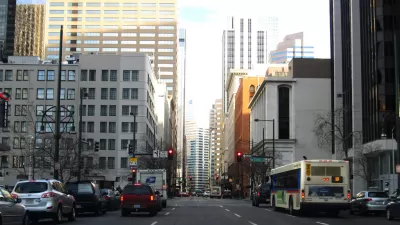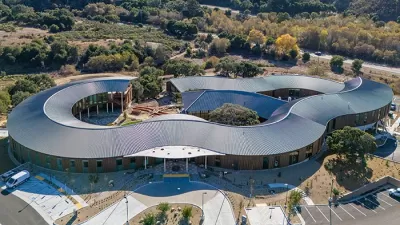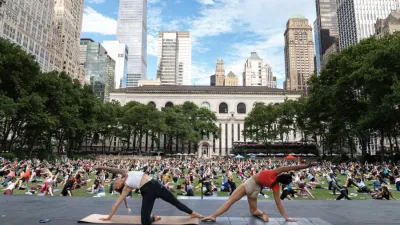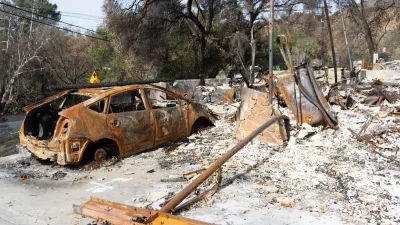A growing awareness of the link between the built environment and mental health has led some designers to examine the ways we can make housing feel more safe and welcoming for vulnerable populations.

In every aspect from transportation to housing, the COVID-19 pandemic laid bare massive inequalities in American society. While "[f]or many of us, the global lockdowns stemming from the COVID-19 pandemic have made our homes places of respite, healing, and renewal," writes Carl Winfield, many people with more complicated housing situations found themselves in even more dangerous positions. Meanwhile, housing conditions, particularly those found in shelters, can trigger difficult emotions for people who have experienced severe trauma.
"The growing awareness of the impact of the built environment on our health is one reason for the growth of trauma-informed design — design that includes adaptations to support a strengths-based framework based in an understanding of, and responsiveness to, the impact of trauma." According to Sandra Serna, vice-president health and housing at Stewards of Affordable Housing for the Future (SAHF), "[s]ubstandard housing — places that are overcrowded, dark, confining, poorly ventilated, or without access to social support — really highlight the negative impact poor-quality indoor environments can have on health." Now, experts are looking at ways to create spaces that "promote feelings of well-being and connection to the environment, that speak to the quality of life." While racial trauma manifests with many of the same symptoms as PTSD, "unlike PTSD, which is linked to a particular experience or series of experiences, racial trauma is marked by continuous direct and indirect exposure to race-based stress, which has a traumatic effect on society as a whole."
One example of a trauma-informed center is Denver's Arroyo Village, which uses trauma-informed design principles to create a safe, supportive space for clients. Shopworks Architecture, who designed the village, "began thinking about ways the built environment can be welcoming, feel safe, and help with the repair and healing of the brain and the prefrontal cortex." Their research led to considerations including the design of stairways to be more open and well-lit, the inclusion of green space and natural light, and other elements that "facilitate safety and belonging."
The work, says Serna, goes beyond just providing a safe, welcoming home for individuals. "The effort to connect residents and help form a larger, interrelated community beyond a particular development has led to the exploration of ways in which people can begin to address their trauma collectively and heal."
FULL STORY: What Is Trauma-Informed Design?

Planetizen Federal Action Tracker
A weekly monitor of how Trump’s orders and actions are impacting planners and planning in America.

Congressman Proposes Bill to Rename DC Metro “Trump Train”
The Make Autorail Great Again Act would withhold federal funding to the system until the Washington Metropolitan Area Transit Authority (WMATA), rebrands as the Washington Metropolitan Authority for Greater Access (WMAGA).

DARTSpace Platform Streamlines Dallas TOD Application Process
The Dallas transit agency hopes a shorter permitting timeline will boost transit-oriented development around rail stations.

The Tiny, Adorable $7,000 Car Turning Japan Onto EVs
The single seat Mibot charges from a regular plug in about as much time as an iPad, and is about half the price of an average EV.

Supreme Court Ruling in Pipeline Case Guts Federal Environmental Law
The decision limits the scope of a federal law that mandates extensive environmental impact reviews of energy, infrastructure, and transportation projects.

Texas State Bills to Defund Dallas Transit Die
DART would have seen a 30% service cut, $230M annual losses had the bills survived.
Urban Design for Planners 1: Software Tools
This six-course series explores essential urban design concepts using open source software and equips planners with the tools they need to participate fully in the urban design process.
Planning for Universal Design
Learn the tools for implementing Universal Design in planning regulations.
Roanoke Valley-Alleghany Regional Commission
City of Mt Shasta
City of Camden Redevelopment Agency
City of Astoria
Transportation Research & Education Center (TREC) at Portland State University
US High Speed Rail Association
City of Camden Redevelopment Agency
Municipality of Princeton (NJ)





























